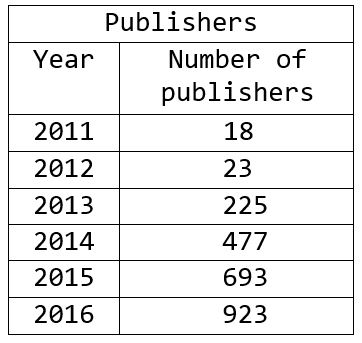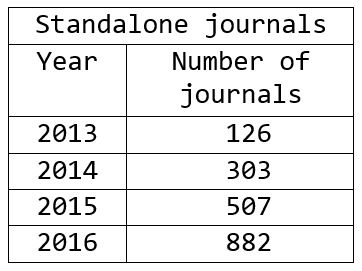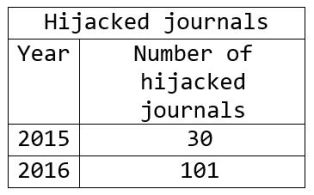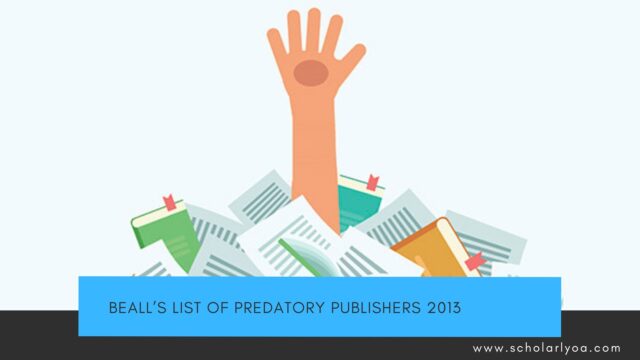
By Jeffrey Beall, January 5, 2016. Each year at this time I formally release my updated list of predatory publishers. Because the list is now very large, and because I now publish four, continuously-updated lists, this year’s release does not include the actual lists but instead includes statistical and explanatory data about the lists and links to them.
Potential, possible, or probable predatory scholarly open-access publishers: This year, 2016, marks the sixth annual release of this list, which is also continuously updated. The list this year includes 923 publishers, an increase of 230 over 2015.

Potential, possible, or probable predatory scholarly open-access journals: This year, 2016, marks the fourth annual release of this list, which is also continuously updated. The list this year includes 882 journals, an increase of 375 over 2015.
Two New Lists: Misleading metrics and Hijacked journals This year, I started two new lists that track two new areas of questionable practices related to open-access journals. The Misleading metrics list includes companies that “calculate” and publish counterfeit impact factors (or some similar measure) to publishers, metrics the publishers then use in their websites and spam email to trick scholars into thinking their journals have legitimate impact factors. The Hijacked journals list includes journals for which someone has created a counterfeit website, stealing the journal’s identity and soliciting articles submissions using the author-pays model (gold open-access).
Misleading metrics: 38. Last year’s list had 26. (The list debuted in March, 2014.)
Hijacked journals: 101 (The list started in May, 2014.)
Here are links to current edition of each list:
Acknowledgement: I am extremely grateful for all the help, support, suggestions, criticism, and advice I have received over the past year. I especially thank those who have forwarded information — such as spam emails — to me, emails providing information about new and questionable journals and publishers.











